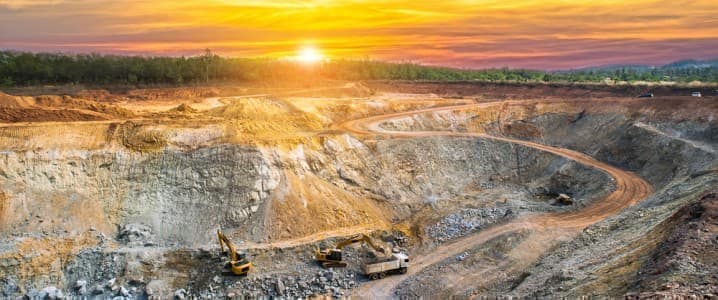As energy companies worldwide expand their renewable energy portfolios, in a bid to ensure their longevity in the global green transition, an increasing number of firms are investing heavily in metals and minerals to support their green energy output. More extensive mining for metals and minerals is vital for an eventual shift away from fossil fuels to renewable alternatives; with the demand for lithium, zinc, and other resources growing rapidly as electric batteries and renewable energy technologies become more commonplace. The industry grew in many parts of the world in 2022, and this trend is just beginning, with several major mining developments planned around the globe for 2023.
While the metals and minerals industry experienced growth in 2022, it was also hindered by price swings, high production costs, and ongoing supply chain disruptions. An end-of-year report from Fitch Solutions suggests that the mining and metals industry will be more stable in 2023 as these challenges settle. Although the ongoing Russian-Ukraine conflict will likely cause longer-term energy insecurity, which will affect inflation levels worldwide.
The ongoing global financial crisis means that metal prices could be slightly lower in 2023, but the commodities market is expected to achieve greater price stability. The metals and minerals market is expected to grow steadily over the next decade, as demand continues to rise in line with the adoption of renewable power and related technologies. Disruptions to mining caused by the pandemic are gradually being overcome and activities are expected to pick up across several global locations over the next decade. The Surface mining market is expected to achieve a value of $39.7 billion by 2030, with a CAGR of around 3.20 percent.
China continues to be the world’s biggest consumer and producer of most minerals and metals. Its ‘zero-Covid’ policy, which has only recently been lifted, had a detrimental effect on the supply and demand of these resources in 2022, with greater stability expected for the coming year. Demand in China is expected to pick up in line with the re-opening of several key industries, although this could be challenged should another break-out of Covid take place.
Several countries are developing new policies around mining and the security of their metals and minerals markets. This is largely in response to the greater nationalization of these resources, as seen in Mexico, and the pressure to decrease reliance on certain world powers, such as Russia, for the supply of high-demand metals and minerals. Some of these policies include the U.S.’s Inflation Reduction Act, the U.K.’s Critical Minerals Strategy, and several Lithium triangle agreements between Argentina, Bolivia, and Chile. Many countries are establishing roadmaps to ensure the development of strong supply chains, as some metals and minerals remain scarce and can only be mined in specific regions of the world.
An analysis from S&P Global foresees supply constraints across critical commodities as early as 2024, due to the anticipated sharp uptake of electric vehicles (EVs), the shift to renewable energy technologies, and related transmission and distribution requirements. Due to concerns about the scarcity of metals and minerals needed to support a green transition, governments worldwide are likely to offer greater funding and incentives for new mining developments, to ensure the necessary supply to meet the growing global demand.
In the case of nickel, Indonesia is increasing its supply to meet the rising demand, which is expected to delay the anticipated deficit until 2026. Nickel is a vital component in batteries, and the demand for nickel for use in batteries is expected to increase from 7.1 percent in 2021 to 17.6 percent in 2026. The S&P analysis also demonstrates how the global demand for lithium and cobalt will likely outstrip supply by as early as 2025 or 2026. While the supply of iron ore and zinc is expected to remain stronger than demand. However, copper demand is expected to rise more rapidly than new mining projects become operational.
Discussions around mining for a green transition being at odds with the environmental degradation and destruction of ecosystems associated with this mining will continue in 2023 as new projects emerge. Worldwide efforts to decarbonize will see the demand for metals and minerals increase sharply over the next decade, as governments and energy firms accelerate plans for renewable energy operations. In addition, ESG will likely be a major consideration in the development of new projects, paying greater attention to the effect of mining on the local environment. Further, companies will have to take more consideration over the social aspect of projects, particularly working conditions, due to the greater risk of strikes due to rising inflation and increasing consumer costs.
The metals and minerals mining industry is set to continue growing throughout 2023 and beyond, as the global demand for these resources increases in line with the green transition. While there will likely be greater market stability in 2023, several challenges will persist; with mining companies continuing to battle with uncertainties due to the global financial crisis, energy insecurity, and concerns over the impact of mining operations on climate change.
By Felicity Bradstock for Oilprice.com
More Top Reads From Oilprice.com:
- Predicting Russia's Next Move Against The Oil Price Cap
- Why Fracking May Start To Embrace A New Form Of Energy
- China Issues Massive Oil Import Quotas As It Reopens Borders


















